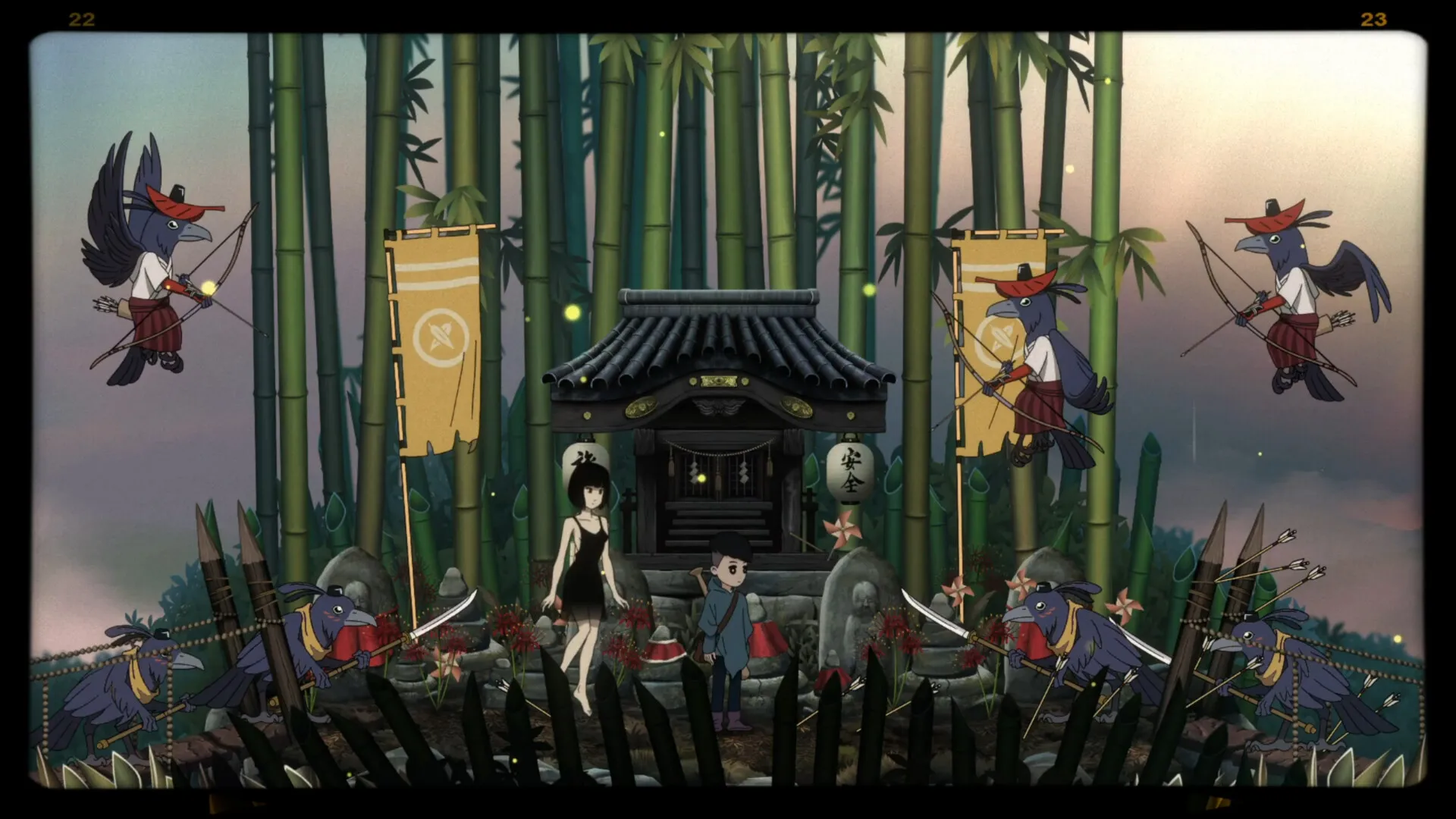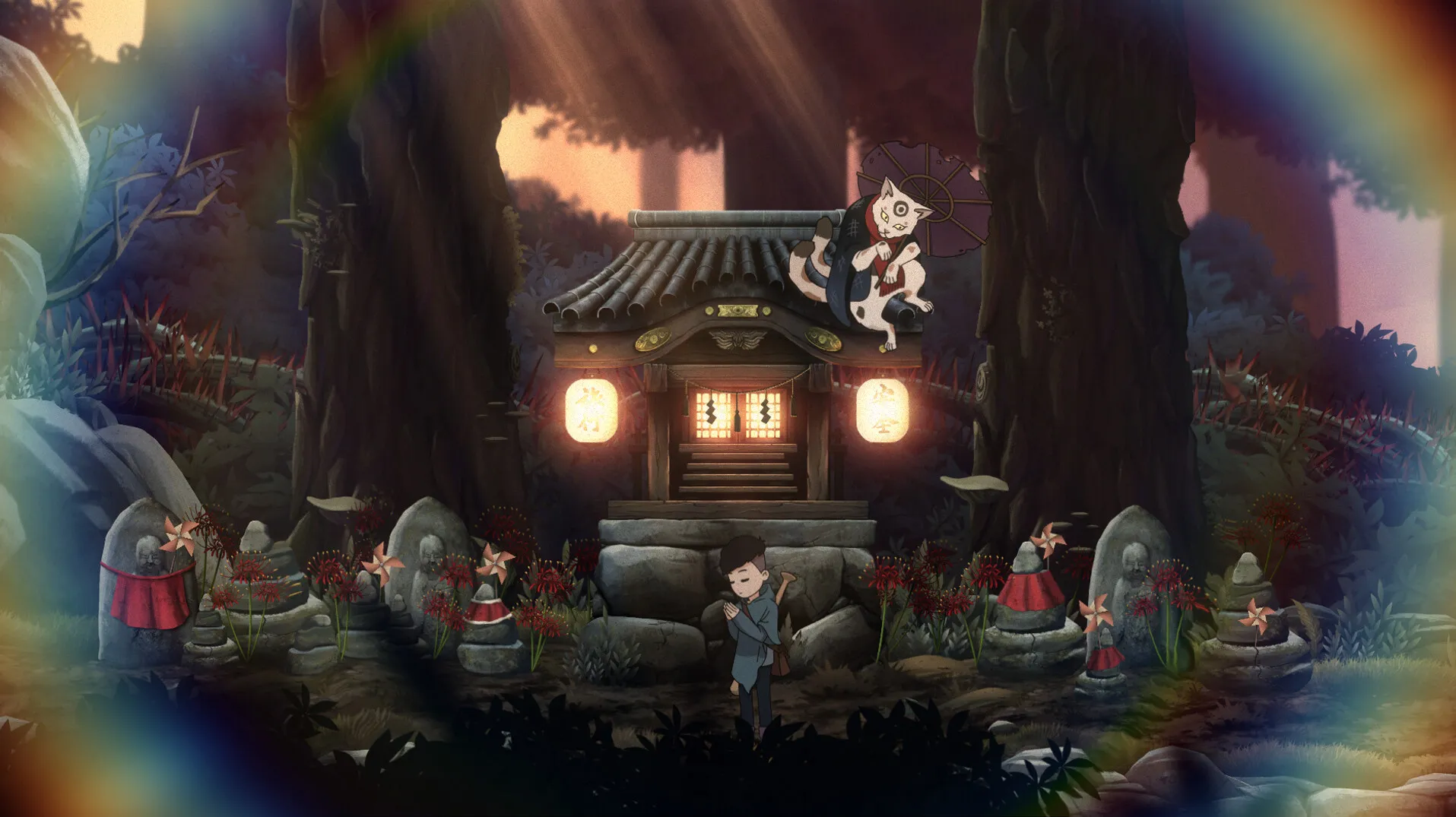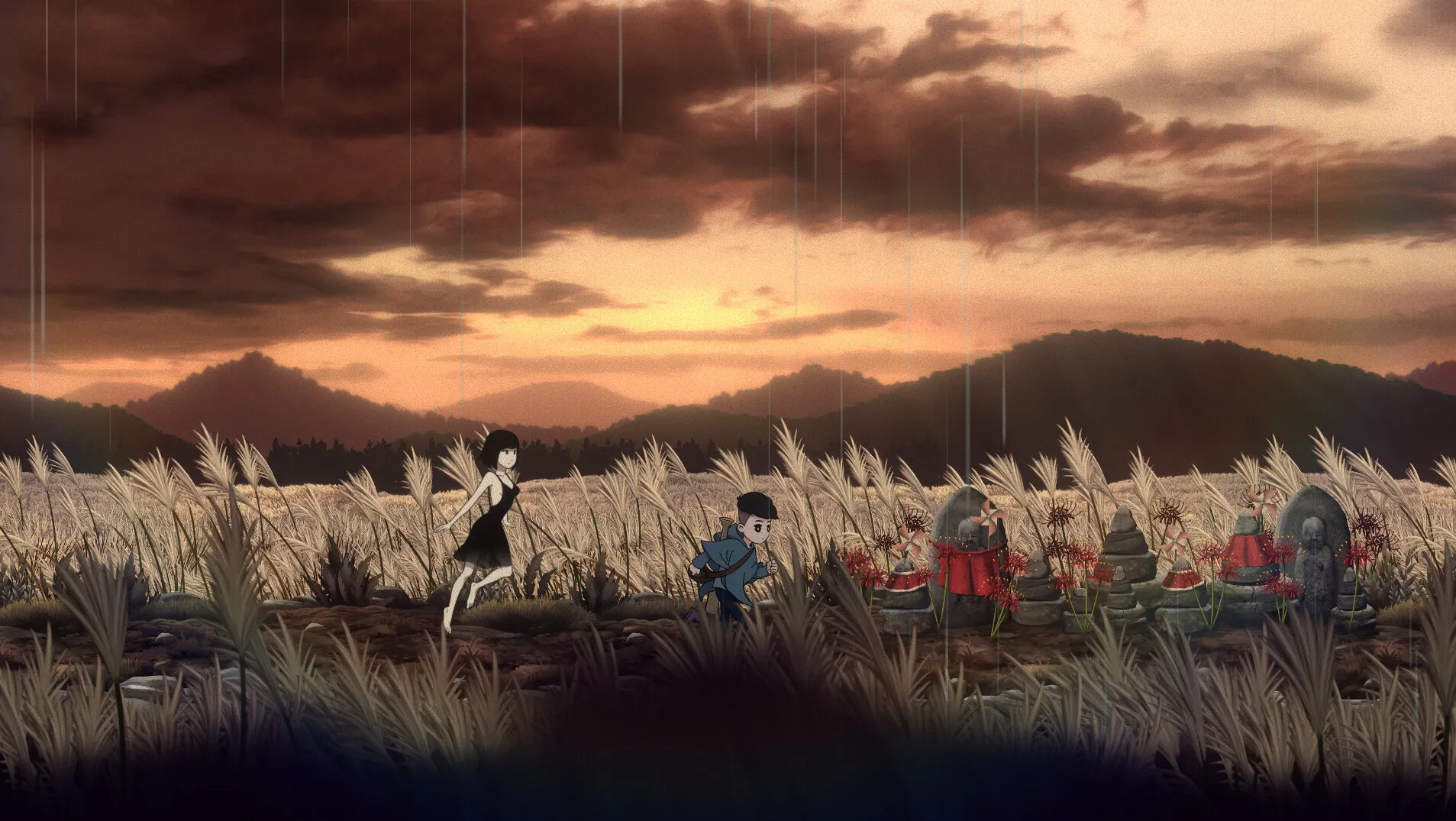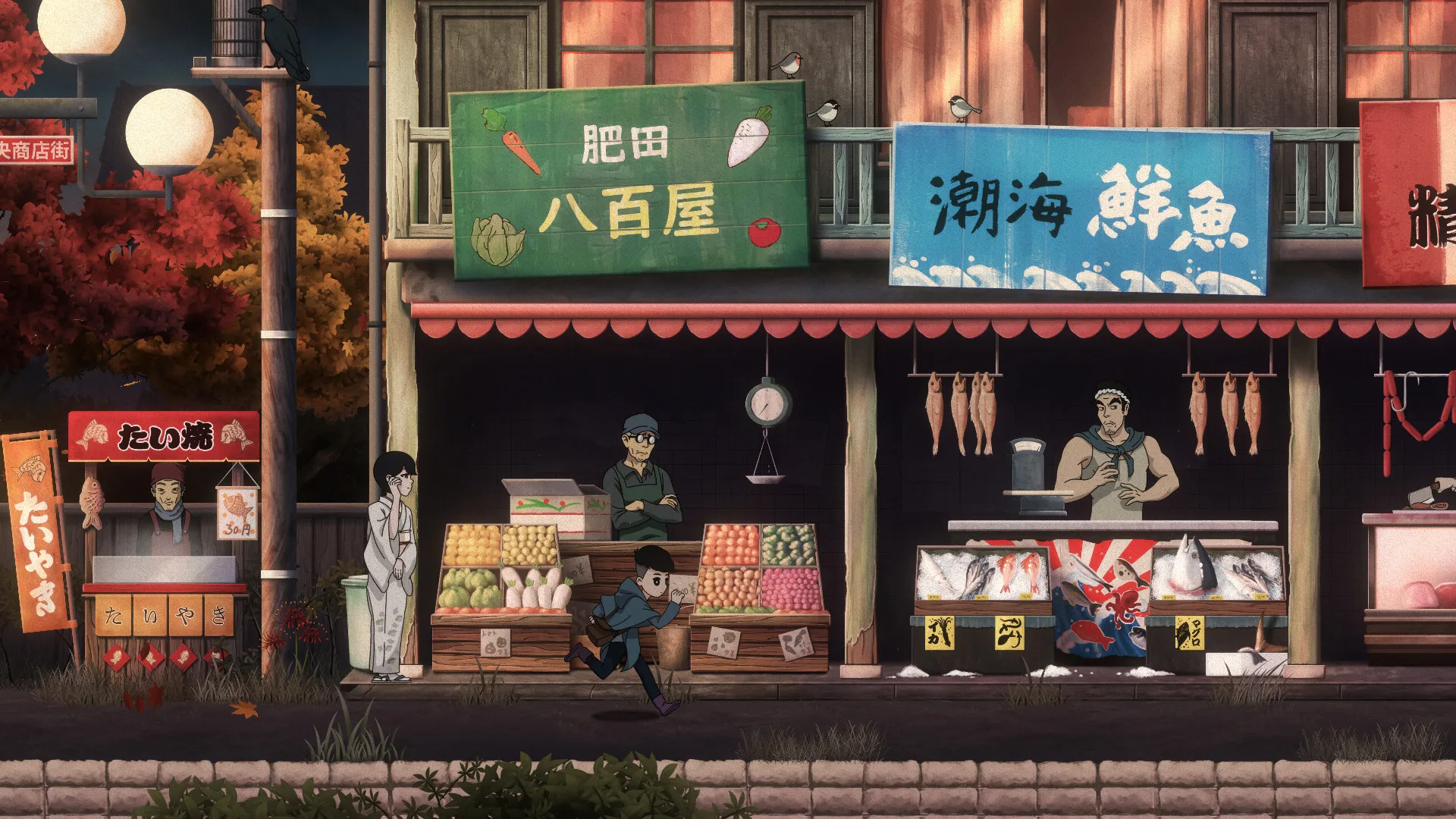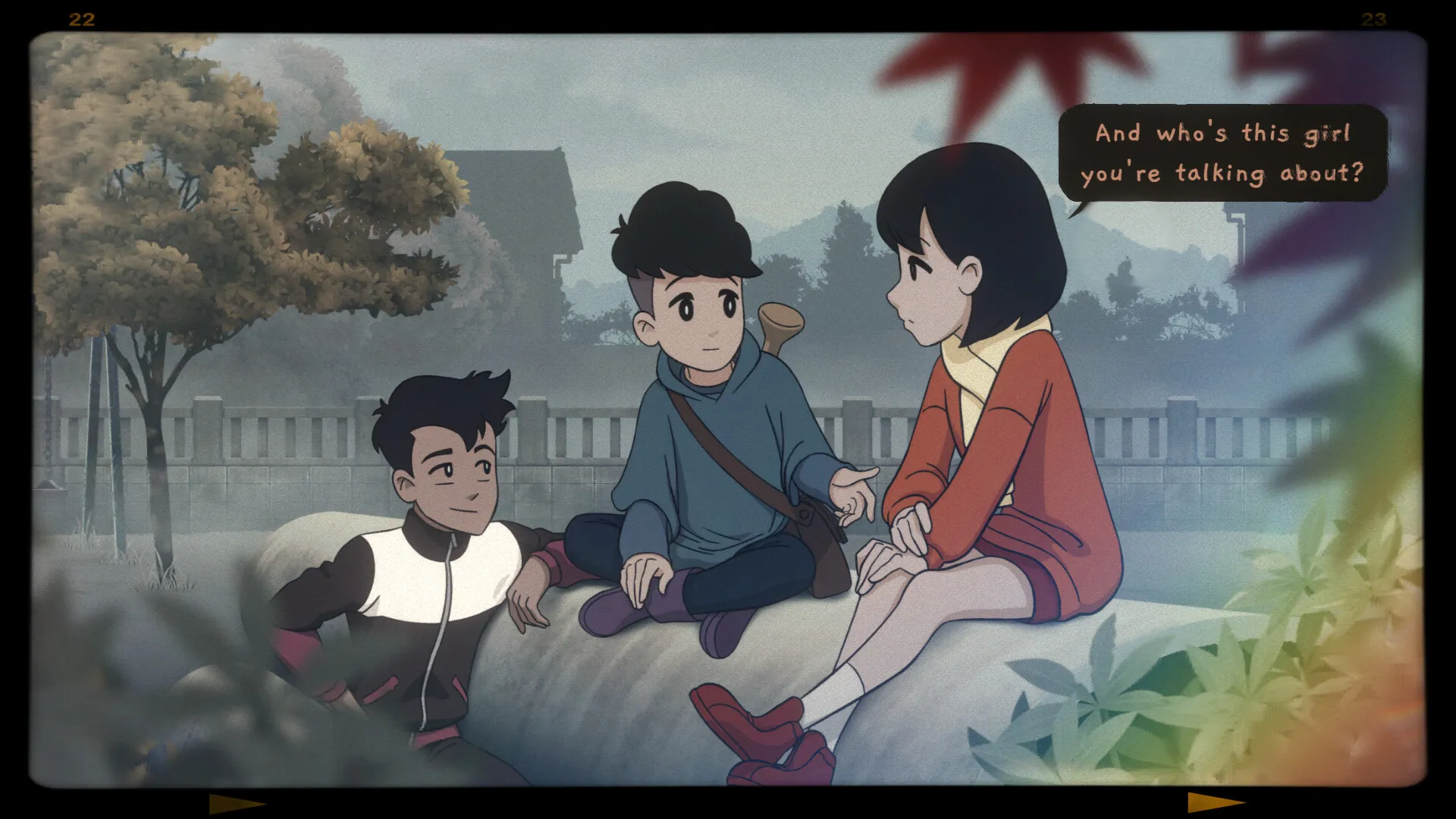Set in a countryside Japanese town called Amatsu in the 1980s, Last Time I Saw You shares an engaging coming-of-age story. We meet Ayumi, a 12-year-old boy who feels dreams calling him into the forest’s mysteries.
Developed by Maboroshi Artworks, an indie Osaka studio, the game explores Ayumi’s personal journey amid spiritual happenings and challenges facing his community.
Ayumi struggles with life changes and high expectations, and troubling visions of a girl in black intensify as typhoons threaten his town’s future. Seeing this girl could provide answers yet opens perilous secrets in the forest.
Between chores and errands, Ayumi navigates relationships with locals like his parents and comrades dealing with their own troubles, from wartime scars to natural disasters’ lasting impacts. Throughout ten in-game days, adventures alongside spirits and people shape how Ayumi understands himself and connects to others in times of upheaval.
Depth of Character
Last Time I Saw You waste no time gripping you with its compelling storylines. Ayumi’s intriguing dreams pulling him to the forest had me eager to find answers. But the true strength lies in everyone inhabiting Amatsu.
Each resident feels vividly real. From parents shaping Ayumi through upheaval to rival storeowners, inner struggles ring genuine. The local policeman, for example, maintains order yet struggles privately. Complex characters like these rooted in faithfulness and flaws feel authentic.
Ayumi too holds depth beyond his outward, indifferent mask. Facing growth pushes him away from comrades in misunderstanding that deepens alone. A beloved priest also shoulders responsibility heavier than his frame. Their relationship evolves touchingly in overcoming what divided.
Even mythical beings dwelling in the forest bring humanity rather than fright. A Kappa named Kapi opens his heart of loss and purpose seeking, as does a Kitsune grieving a daughter. Connecting spirits to townsfolk forages empathy across differences.
Subtle subtleties also surface. A florist preserves beauty amid calamity while two men find solace, not in sake but shared fond remembrances. Every piece contributes greater fullness.
Problems moreover stem from real places, not superficial troubles. Natural disasters and wartime’s scars still mark the community decades on. Personal trials likewise arise from within, not external sources. Resonant realism imbues challenges with gravitas beyond games.
Through it all, care breathes into each relationship, however strained. Families stay loyal, whatever the hardships, as neighbors uphold their village. Despite darkness, light brightens these lives and encourages optimism, however small each day.
Amatsu’s people live richly because of complications that strengthen genuineness. Their triumphs and struggles give a heartfelt home.
Experience of Amatsu
Last Time I Saw You brings Amatsu to life through gentle gameplay. As Ayumi, you roam forests and streets, learning each resident’s stories. Main quests arise naturally from townsfolk, while side activities offer heartwarming surprises.
Exploration stays relaxing throughout. Ayumi walks at a leisurely pace, perfect for taking in details. Maps remain uncluttered, so focusing on chatting comes easy. Though simplistic, interactions feel thoughtful. Helping spirits by ringing bells tests memory in a calming way.
Combat adds little excitement. Batting enemies interrupts strolls too often, while stealth portions frustrate more than fulfill. Removing these might streamline enjoyment. Platforming challenges like crosses convey adventure without interruptions.
Extra puzzles could liven Amatsu. Current ones engage without pressure. Deeper mysteries involving residents could encourage revisiting beloved characters. Crafting an item for a forest friend forms a bond. More imagination in side quests adds lasting smiles.
Still, minor shortcomings matter less beside personal tales. Chores become engaging thanks to heartwarming dialogue. Wishing adults find relief highlights struggles in kindly ways. Problems stimulate empathy more than action. Overall, gameplay enhances moving among these warm souls at a comfortable pace. More focus lies in discovering truths in each than finishing tasks. Experience replenishes the spirit.
Amatsu’s Artistic Charms
Last Time I Saw You immerses through stunning artwork. Its hand-drawn design astounds; backgrounds burst with life wherever Ayumi roams. Forests flow dense and mysterious against horizons blurring reality. Town streets too welcome discovery around each corner.
Seasons subtly shift these lands. Fields bloom fresh then fade beneath gentle rains, leaving puddles perfectly placed. Winds whistle leaves loose while sunsets bathe the sky in warm tones. Weather patterns emerge realistic from Maboroshi’s efforts.
Details dazzle closer inspection. Birds flee at footsteps; fallen petals crunch underfoot. Townsfolk persist with purpose, bringing daily routines to relaxing rural life. Subtle touches together weave realism through Amatsu.
To fully grasp Amatsu though requires hearing its soul. Melodies calm as rolling hills evoke joy in simply living. Effects too immerse, from taps along wooden walls to crunches amid fallen blossoms. Together, music and ambience nurture spirit.
While technical flaws surfaced, these affected enjoyment less than art surpassing games. Last Time I Saw You presents a place to rediscover childhood’s vanishing moments, where beauty feels rediscovered in everyday things. Imperfections matter little where art so lovingly renders life.
Room for Enhancement
While Amatsu captivates visually, some detracting technical points emerge. Regrettably, impacts marred immersion at intermittent junctures.
All too frequently, contact with restless spirits induces lockups rather than intended transports. Similarly, traveling tunnels occasionally glitches the engine. When delving Amatsu’s delights, such disruptions stir frustration.
One peculiar bug manifests during bell puzzles—colossal blocks materialize where serenity should ring. Though a lone eccentricity, it stands out bafflingly.
Overall, the experience flows smoothly for most. However, stability could be gained by further efforts. More thorough debugging might remedy remember glitches. Likewise, bolstering coding constructs could establish sturdier foundations upon which Amatsu’s wonders wonderfully wander.
Predictability helps enjoyment. While artistic expressions astound, predictable interactions aid appreciation. Technical turbulence now and then shakes the soul from scenic solace. Continued development may yield tradeoffs less taxing on tranquility.
Maboroshi’s debut demonstrates talent deserving wider audiences. Refinement could ripen reception, allowing larger legions to lose themselves in Amatsu’s allure with less likelihood of unwanted removal.
Amatsu’s Enduring Charms
Though concise, Last Time I Saw You packs potent staying power. Within six to ten absorbing hours, Amatsu profoundly takes root.
Revisiting this handcrafted realm remains gratifying long after credits scroll. Residents seen but once etched deep, their innermost lives still glimpsed between lingering thoughts. Hardships faced leave an impact beyond final scenes, stirring recollection of resilience.
Gameplay likewise holds repeat value. Exploration stays relaxing, interactions heartwarming each repeat stroll. Challenges provide just enough stimulation without stress, constantly enjoyable in moderation.
Memories too may prompt replays simply to savor Amatsu’s artistic beauty and intimate details once more. And who wouldn’t gladly accompany Ayumi again to ensure friendships broken mend and loved ones heal? Some stories beg rekindling hope through difficult fights.
While a single playthrough reveals mucho, deeper layers could potentially emerge with repeated careful observation. Yet one experience offers the richest replenishment; Amatsu gifts last far beyond milliseconds spent within. A town and its people become treasured places our spirits revisit whenever life brings weariness.
Lingering Legacies of Amatsu
Within six to ten hours, Last Time I Saw You imprints tales of Amatsu firmly upon hearts and minds. Though brief, this vibrant village and its people profoundly resonate long after final scenes.
Play dissolves in vivid recollection. Ayumi and townsfolk etched deep; their struggles, hopes, and spirit stick firmly in idle thoughts. Hardships faced through kindness and community continue compelling long after credits.
Gameplay retains freshness on replays. Interactions stay engaging each return visit. Challenges provide respite without pressure, retaining relaxation. Memories too may prompt replays simply to cherish Amatsu’s beauty once more.
Deeper still, impact lingers far beyond final scenes. Troubles faced by all prompt reflection on hardship and human kindness. Perhaps Amatsu gifts most last far beyond milliseconds spent within. A place where people find solace despite sorrows, its lessons resonate whenever life brings weariness.
A single playthrough reveals depth, yet rewards remain with repeated observation. Overall, Amatsu imprints remarkable remembrance of life’s delicate balance between difficulties and compassion through community. Its magic remains long after the journey’s end.
Conclusion
In conclusion, Last Time I Saw You presents a truly memorable experience. Its greatest strengths lie in superb art, intimate stories, and heartwarming atmosphere.
Amatsu springs to life through stunning visuals and sound. Yet deeper magic emerges from its people—characters so vividly real, their struggles and bonds resonate. Crafted with care, Maboroshi spreads warmth through this community.
While technical faults existed, enriching narratives easily overwhelmed such. In Amatsu, discovery replenishes the spirit unlike any other work. Memories of its residents will linger wherever life’s path may wind.
I wholeheartedly recommend delving into Amatsu’s world for those seeking works full of Japanese charm. Its tales burrow deeply into hearts. Replays reveal new meaning with each insight into lives inhabiting this precious place.
Maboroshi’s debut shows incredible promise. Their care for everyday beauty and humanity’s endurance amid hardship birth an experience deserving wide appreciation. Last Time I Saw You offers an adventure reviving hope that together, compassion helps people withstand any storm.
The Review
Last Time I Saw You
Though not without flaws, Last Time I Saw You offers a heartwarming adventure well deserving of exploration. Its strongest feats lie in vividly crafted characters and townspeople that feel vibrantly real. Through them and Amatsu's stunning artistic presentation, thoughtful stories impart hope and remind what truly matters in life. Maboroshi's debut presents a gentle yet deeply impactful experience that will linger long in memory.
PROS
- Deeply compelling and fully realized characters
- Stunning artistic presentation with intricate detail
- Heartwarming and meaningful narrative focused on humanity
- Immersive small town atmosphere of Amatsu
- Gentle yet thoughtful exploration of personal struggles
CONS
- Some technical bugs that interrupted immersion
- Combat and stealth sections disrupted peaceful gameplay.
- Potential for more intricate side quests and puzzles
- Room for optimization to avoid occasional crashes or freezes







































